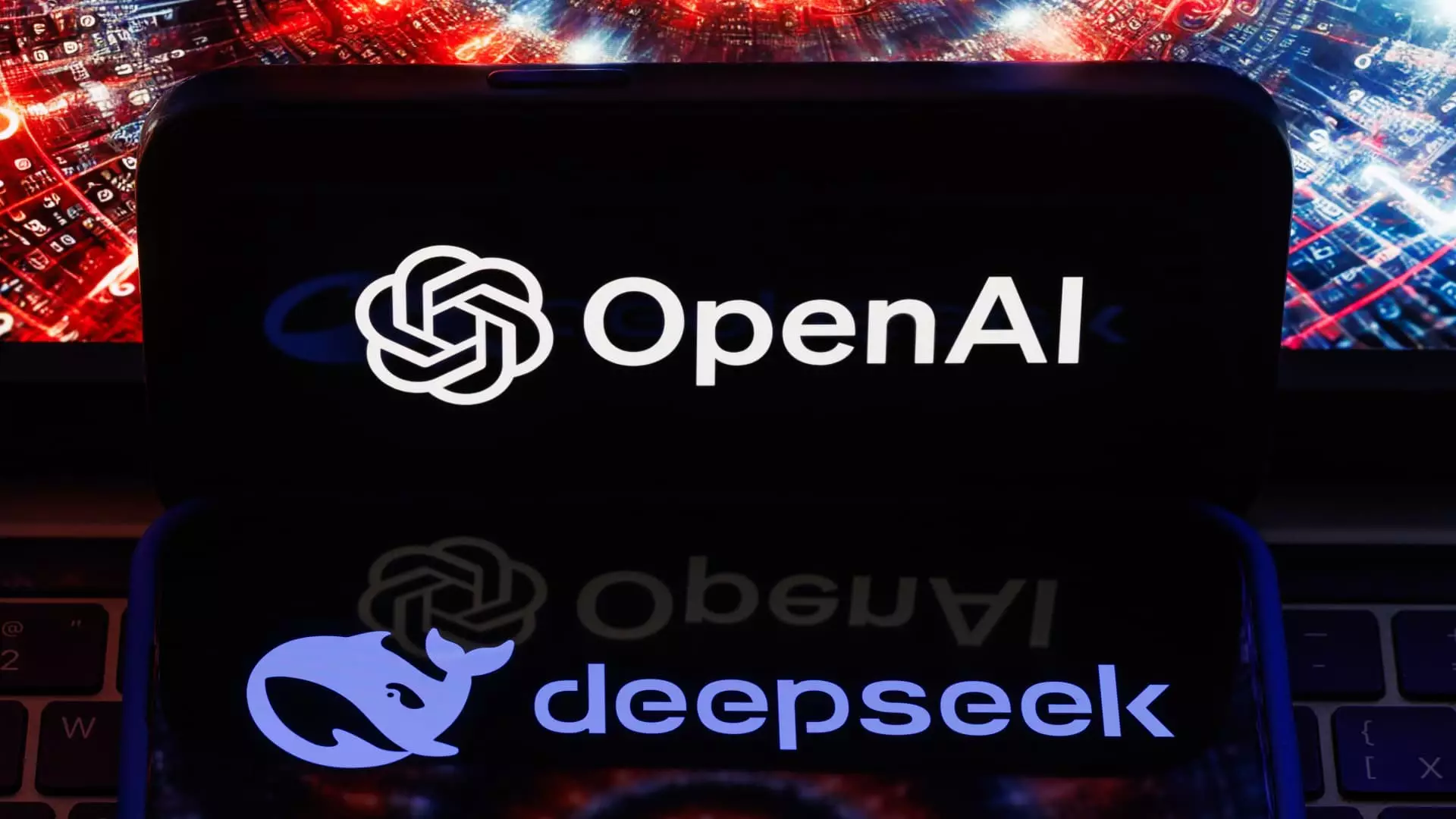In recent times, the landscape of artificial intelligence (AI) development has witnessed significant shifts, particularly with the emergence of DeepSeek, a Chinese AI lab that has garnered attention for its groundbreaking innovations. Observations made during interviews at France’s Artificial Intelligence Action Summit point toward an escalating rivalry between the United States and China in the AI sector. High-ranking executives from major tech firms articulated a sense of urgency and competition, emphasizing the notable advancements exhibited by DeepSeek, indicating its potential to transform the global dynamics of AI technology.
The unveiling of DeepSeek’s latest AI model, created at a remarkable training cost of less than $6 million, has sent shockwaves through global markets. This figure starkly contrasts with the astronomical investments by leading Western tech firms like OpenAI and Anthropic, which often allocate billions for AI research and development. Chris Lehane, OpenAI’s Chief Global Affairs Officer, remarked on the implications of this new model, framing it as a clear demonstration that China’s capabilities in AI innovation must be taken seriously. He articulated that the competition is not only real but marked by significant stakes.
However, DeepSeek has not escaped criticism. Observers have raised alarms regarding the model’s apparent censorship of sensitive topics, such as the 1989 Tiananmen Square massacre. The model’s evasive responses on politically charged subjects highlight challenges and ethical questions surrounding the deployment of AI in jurisdictions with stricter governance.
The rivalry in AI development is increasingly viewed through a geopolitical lens. During discussions at the Paris summit, experts emphasized that this competition mirrors historical shifts—similar to the industrial revolutions and the race for energy resources. The notion is becoming prevalent that only two powerhouses are currently positioned to harness AI at scale effectively. This reality presents both an opportunity and a challenge for innovators across the globe, as they must navigate heightened competition and evolving technological standards.
Abishur Prakash, founder of the Geopolitical Business advisory firm, argued that America’s traditional dominance as a technological leader is being reevaluated. He pointed out that the narrative of the U.S. being the sole champion of technology is increasingly outdated as the gap between these two nations narrows. His insights suggest that the rise of DeepSeek calls for a reassessment of Western strategies and understandings of Chinese capabilities and ambitions.
While the advances put forth by DeepSeek are undoubtedly impressive, industry executives remain cautious about the implications for established players like OpenAI and Anthropic. Despite claims of their efficacy and efficiency, doubts linger over the actual costs and technological frameworks employed by DeepSeek. A recent analysis by SemiAnalysis raised concerns about the company’s hardware expenditure purportedly exceeding $500 million and highlighted the significant resources needed for research and development.
Moreover, some speculate that DeepSeek achieved its performance benchmarks by leveraging technology or data from more advanced U.S. systems, a process known as model distillation. This practice, while not inherently unethical, raises questions about the originality and sustainability of DeepSeek’s innovations. The stakes are high, and as competitors scrutinize each other’s methodologies, the battle for AI supremacy is bound to intensify.
Despite DeepSeek’s recent breakthroughs, sentiment among leading executives remains reserved regarding any immediate threat to existing businesses in the AI sector. Victor Riparbelli, CEO of the AI video platform Synthesia, argued that while DeepSeek’s innovations challenge the traditional approach of brute-force scaling, a significant shift of resources away from established players is unlikely in the near future. He emphasized that, while DeepSeek presents a credible model, established systems will likely continue to prevail among users due to their familiarity and proven effectiveness.
Additionally, Meredith Whitaker, president of the Signal Foundation, echoed this sentiment, stressing that market momentum still favors larger models. She asserted that the concentration of power within a select few companies remains unchanged, indicating that DeepSeek has yet to disrupt the prevailing paradigm significantly.
As the global race in AI technology continues to evolve, DeepSeek’s entry into the field serves as both a challenge and a catalyst for reflection among Western firms. The ongoing competition may push all players to innovate and adapt faster than ever before. Observers and industry leaders must tread lightly, balancing strategic concerns with the continuous influx of technological advancements that may reshape the future of AI as we know it. The stakes are undoubtedly high, and how this rivalry unfolds could dictate the future of AI innovation on a global scale.


Leave a Reply